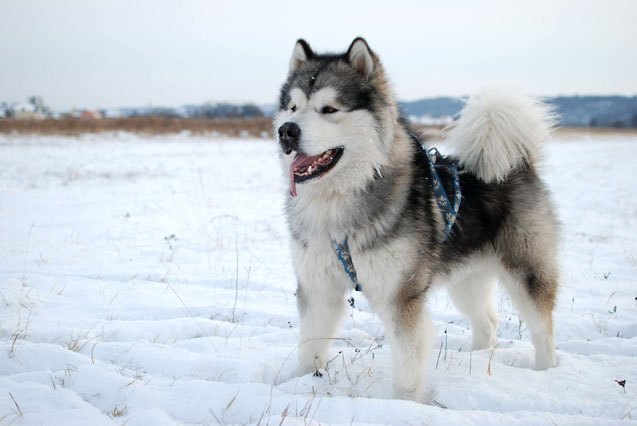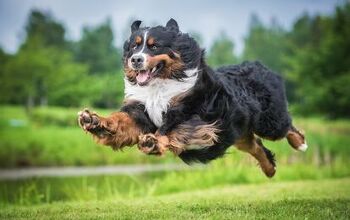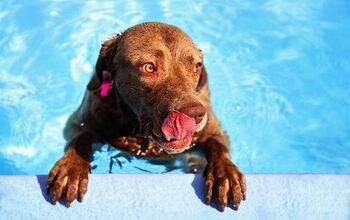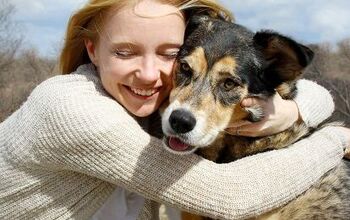Top 10 Snow-Loving Dog Sled Breeds

While you may think your pooch could be dog-sled worthy because he yanks, pulls and drags you across the parking lot each time you approach the dog park gate, you’d be wrong! Dogs designed to pull sleds are a special breed and it’s about more than just having the will to get from point A to point B. Sled dogs are bred for strength, size, stamina and speed. They must work well as a team, possess an efficient gait that helps them move quickly and evenly through rough terrain, have webbed, closely spaced toes that can act as snow-shoes, be acceptable to wearing a harness and possess a warm double coat that both repels the elements and keeps them warm.
Additionally, these active boys can’t be picky eaters; they burn up to 12,000 calories a day so need a high-fat diet to maintain energy levels. So which dog breeds can check all of these boxes and even more? Here is our list of the Top 10 dog sled breeds.
This dog is most often associated with pulling a dog sled and he comes in 2 variations. One is designed for speed and pulling shorter distances while the other is built for the long haul. Surprisingly, this handsome boy is not a pure-bred but a mixed bag of Alaskan Malamute, Siberian Husky with some Pointer and Saluki added to the mix for the sprinting group. The plus to this mixed breed is that he’s not nearly as stubborn as his purebred kin, nor as apt to wander off. (Photo credit: Ekaterina Brusnika/Shutterstock)
This big boy is built for strength and endurance. Known as a “freight” class of dog, he’ll never win the race but he sure will finish and is often used for pulling heavy loads over rough terrain for extra long expeditions. He’s considered to be on the larger size when it comes to sled dogs and while he is unquestionably a team player, this exuberant dog has a mind of his own and can become restless and aggressive towards others if his exercise needs aren’t met. (Photo credit: DiLiDon/Shutterstock)
This pooch was truly “Made in Canada” and was bred by the government specifically to help those living in harsh Arctic conditions. While this hardy middleweight sled dog is no sprinter, he is capable of pulling up to 175 pounds (per dog) through rough terrain and for distances ranging to 70 miles before needing to rest. And although he is typically Canadian – polite, playful and easy to train – he was at one time, used for protection from polar bears so there’s def a bite to his bark! (Photo credit: critterbiz/Shutterstock)
This is a more recent addition to the sled dog line-up that hales from New England where he was first bred in the early 1900s. This hardy, dependable pooch is another mixed bag of multiple working breeds including a little bit of Mastiff, German Shepherd Dog, Greenland Husky and even Belgian Shepherd. While he’s a little less driven than most dogs bred for pulling sleds, once he’s out with his team he’s a hard-working pooch who is described as having a tireless gait. (Photo credit: Nick Chase 68/Shutterstock)
Eurohound
This dog is a carefully curated mix of pure-bred Pointer (typically German Shorthaired or English) and Alaskan Husky and he’s been the pooch of choice for Scandinavian dog sled racers for over 50 years. He’s a lighter-weight, short-haired sled dog designed for sprint racing where he and his team run shorter distances at top speed. Variations on this dog include a distance runner who performs well under harsh conditions – just reduce the Pointer DNA and let the heavy-furred Husky dominate. (Photo credit: Elenarts/Shutterstock)
Kugsha Dog
This highly intelligent and hard-working sled dog has a fairly primitive behavior when it comes to interaction with humans and while all dogs are descended from wolves, the gene pool with this one is just a little tighter than most others. Yes, he’s even a dead-ringer for his canis lupus kin. While he was originally bred under the name “American Husky”, this sled dog’s name was later changed to Kugsha in honor of the 3 wolf-hybrid breeders who were involved in developing the breed. (Photo credit: Kobidog/Wikimedia)
No surprise this independent-minded fellow is a native of Greenland where he is still a primary source of transportation in winter and often used by hunters for longer sled excursions into the wild. Built for endurance, not speed, this dog is a little slimmer and taller than his Canadian counterpart but has similar heavily padded feet that turn into snow shoes when pulling sleds across icy terrain. A heavy coat and bushy tail that covers his face when sleeping ensures this pooch is ready for long haul runs. (Photo credit: LouieLea/Shutterstock)
This highly social pooch is ideal for teamwork and delivers the strength and stamina you would expect from his parent breeds; the Alaskan Malamute and Siberian Husky. Considered to be a medium- to large-sized sled dog, this energetic pooch is compact yet sturdy and built for the long haul. Because of his thick, double-coat, he’s ideal for working in cold climates. Wolf-like in appearance, this independent pooch does have an stubborn streak when not working alongside his sled members. (Photo credit: DejaVuDesigns/Shutterstock)
At just 60 pounds, this iconic sled dog is actually smaller than his doppelganger the Malamute yet is capable of pulling a much heavier payload for a longer period of time. The Siberian tag is no misnomer, he originated in Russia prior to being brought to Alaska at the turn of the last century for dog sled racing. Smaller, faster and more enduring than the much heavier freighting dogs, this energetic pooch that howls rather than barks, is the dog you want for a long excursion. (Photo credit: Aleksandr Abrosimov/Shutterstock)
Another native of Siberia, this dog was bred to not only pull sleds but herd reindeer and was key to survival in harsh climates, moving both people and supplies. In fact, he often slept in with his owners to offer both extra warm and protection (ever heard of Three Dog Night?). While he is not the fastest sled dog nor is he built for the longer hauls, this all-white dog with the fluffy double-coat and friendly disposition is often found competing in mid-distance races and even sprints. (Photo credit: Ilya Barmin/Shutterstock)

Sharing space with three seriously judgy Schnoodles and a feline who prefers to be left alone. #LivingMyBestLife
More by Mary Simpson

































